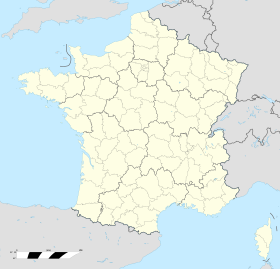Ouvrage Grand Hohekirkel
| Ouvrage Grand-Hohékirkel | |
|---|---|
| Part of Maginot Line | |
| Northeast France | |
| Coordinates | 49°03′09″N 7°30′18″E / 49.0525°N 7.50511°E |
| Site information | |
| Owner | French Army |
| Controlled by | France |
| Site history | |
| Built by | CORF |
| In use | Abandoned |
| Materials | Concrete, steel, deep excavation |
| Battles/wars | Battle of France, Lorraine Campaign, Battle of the Bulge |
| Ouvrage Grand-Hohékirkel | |
|---|---|
| Type of work: | Small artillery work (Petit ouvrage) |
|
sector └─sub-sector |
Fortified Sector of the Vosges └─Philippsbourg |
| Work number: | O 450, Ouvrage C |
| Regiment: | 154th Fortress Infantry Regiment (RIF) |
| Number of blocks: | 7 |
| Strength: | 7 officers, 197 enlisted |
Ouvrage Grand-Hohékirkel is a petit ouvrage of the Maginot Line, located near Bitche in the French département of Moselle. Grand-Hohékirkel is adjoined by gros ouvrage Otterbiel to the west and petit ouvrage Lembach at some distance to the east, and faces the German frontier. It was part of the Fortified Sector of the Vosges.
Grand-Hohékirkel comprises two separate entrance blocks for ammunition and personnel, three infantry blocks, one artillery block and one observation block. Grand-Hohékirkel saw no significant action in the Battle of France, and limited action during the 1944/45 Lorraine Campaign. It was renovated for use during the Cold War. Grand-Hohékirkel is now unused, on restricted military land.
The site was surveyed by the Commission d'Organisation des Régions Fortifiées (CORF), the Maginot Line's design and construction agency; Grand-Hohékirkel was approved for construction in August 1931. The petit ouvrage is a typical gros ouvrage of the smaller sort, with separate personnel and munitions entries a few hundred meters to the rear of the combat blocks, which are sited on an eminence controlling the terrain to the north. A second phase of construction, planned but not carried out, envisioned the addition of an 81mm mortar turret and an additional 75mm gun turret.
Grand-Hohékirkel comprises two entrance blocks, three infantry blocks, one artillery block and an observation block. The munitions and personnel entries are located to the rear of the compactly arranged combat blocks. A small barracks and usine or service area are located near the personnel entry. Grand-Hohékirkel lacks a main "M1" magazine, usually provided in a gros ouvrage. From the junction of the entry galleries a gallery runs at an average depth of 30 metres (98 ft) to the combat blocks.
A series of detached casemates and infantry shelters are in the vicinity of Grand-Hohékirkel, including
Additionally, the space between Grand-Hohékirkel and Lembach, its neighbor to the east, is filled by more than forty casemates and blockhouses along the river Schwartzbach and across the ridge to the Sauer river.
...
Wikipedia

